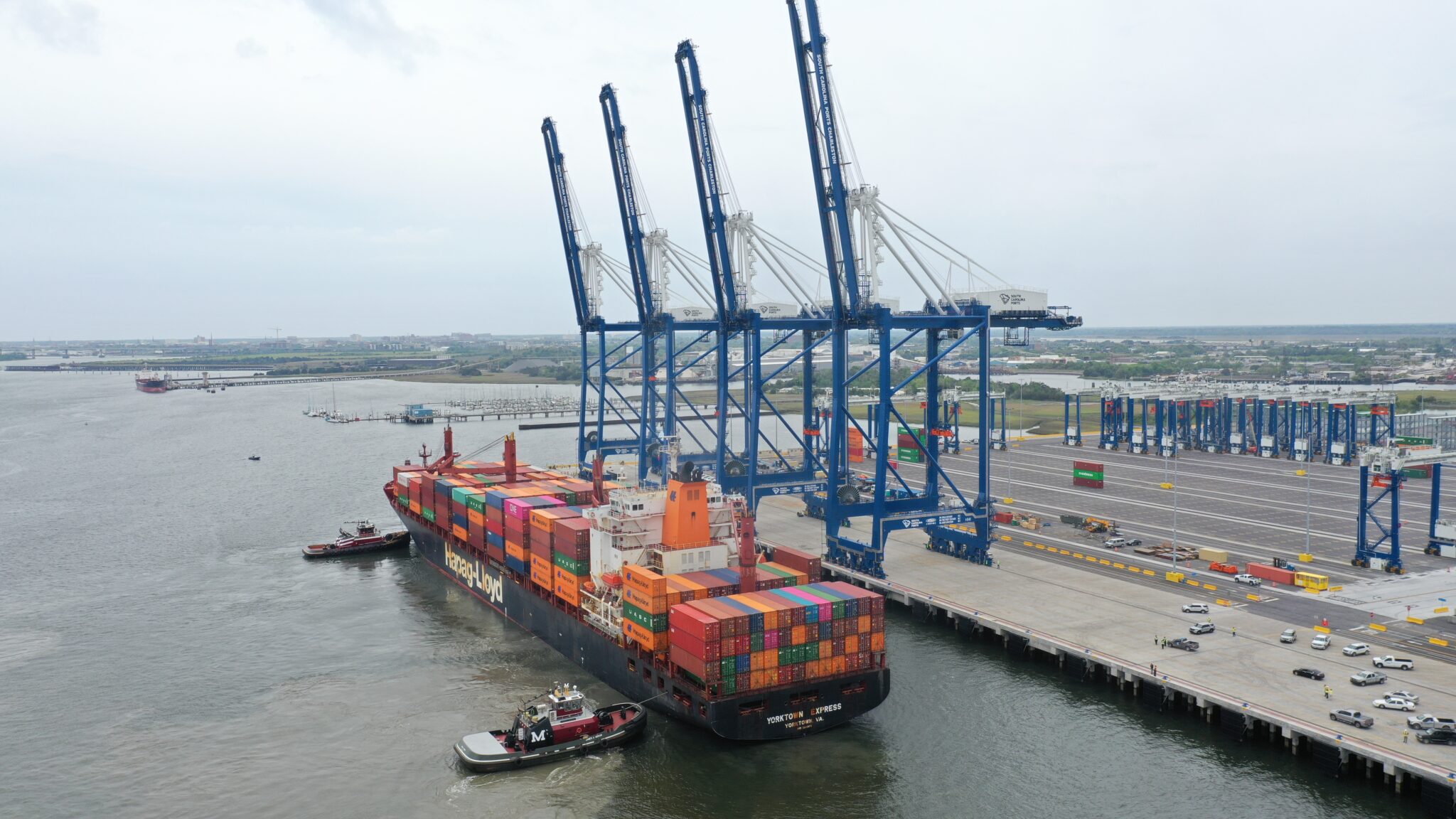by John D. McCown (OpEd) Sixty-six years ago the postwar growth in the US economy saw increasing congestion on highways. That problem became the catalyst for two events in 1956 resulting in capital investments whose returns over the ensuing decades and to this day are significant. One event was the Federal Aid Highway Act of 1956 that authorized the creation of the interstate highway system.
The construction of 41,000 miles of four-lane super-highways unobstructed by intersections and traffic lights connecting every part of the mainland was the largest public works project in American history. The full returns from that wise investment are so high as to almost be incalculable and the interstate system is certainly the epitome of federal government investment in infrastructure at its very best.
The other event was the invention of container shipping by Malcom McLean. His large trucking company had lots of cargo moving between the New York area and Texas and Florida. The longer times it was taking his trucks to make that long haul augmented the benefits he saw from a new process he wanted to develop that he thought would be a more cost-efficient way to move merchandise freight. His new system did just that, first domestically and then internationally. The economic benefits today for both the US and world economies from the trade enabled by the cost-efficiency of containerization are also so high as to almost be incalculable.
Related Book: Giants Of The Sea by John D McCown
We are now seeing the impact of congestion across many of our container ports and terminals. The fact that there are currently container ships waiting for berths on all three coasts is a tangible reminder that many ports and terminals are operating near or at capacity. For more than a year, we’ve experienced the biggest disruption ever in container shipping. Among its consequences, one key impact has been the additional container shipping costs that have been absorbed by the US economy. By my calculations, the overall pricing for all inbound containers into the US during the second quarter of 2022 was 3.218 times what it was two years ago before any pricing impact. That translates into the US economy is absorbing $82 billion annually in added container shipping costs. If you believe as I do that the pricing increases were driven mostly by contraction in the capacity of container systems and that in turn was primarily a function of terminal-related issues, you conclude that the root cause is inadequate landside infrastructure.
In 2021, total inbound containers into the US were 24.6 million twenty-foot equivalent units. While that is four times the number of inbound containers into the US in 1995, it was handled fundamentally with the same container ports and terminals. Increased productivity, stacking containers higher and previous excess capacity all came together to handle that growth. It has been yeoman’s work that this was accomplished with basically the same landside infrastructure, but there are now multiple signals that the system is reaching its limits. The further growth we can anticipate will put an ever-increasing strain on that system. While it won’t be at the 5.6% annual growth rate from 1995 to 2021, half that or a 2.8% rate is a reasonable estimate going forward. At that, inbound containers to the US will be twice as much in 25 years and four times as much in 50 years.
The present US port system is simply not in the position to accommodate the geometric growth in container volume on the horizon. To handle growth, more than just marginal improvements to capacity are needed. A bold new federal initiative adding capacity with new container ports and terminals is needed. It should include large new inland terminals allowing for fully wheeled operations that make the handoff between modes easier, a key contributor to the gridlock in the current systems. The containers moving in and out of the US each year represent $1.5 trillion in goods inextricably tied to the economy. The most direct path to returning to the normalcy of the past and ensuring we don’t repeat the recent gridlock comes from adding container terminal capacity. It’s an expansionary infrastructure investment that both solves a problem and paves the way for further growth.
Just as the federal government sixty-six years ago addressed the need for a better highway system, today it should address the need for a more resilient container supply chain. This will require significant investment, but that requirement needs to be balanced against the tangible cost of recent disruption. Without meaningful steps taken, the disruption in the maritime supply chain that has recently been seen will be more consistent and pervasive in the future. With $82 billion a year the minimum cost of the inadequacy of our present landside infrastructure, that amount can certainly justify significant investments to fully remedy the problem while ensuring future growth. The returns from such investments may not equal the interstate system, but they will nevertheless be significant.
John D. McCown is a globally recognized shipping expert with four decades of maritime experience including 15 years as CEO of a US flag container shipping company he co-founded. He is an inventor with two patents, author of the book Giants Of The Sea, and founder of Blue Alpha Capital.
Unlock Exclusive Insights Today!
Join the gCaptain Club for curated content, insider opinions, and vibrant community discussions.

 Join The Club
Join The Club













